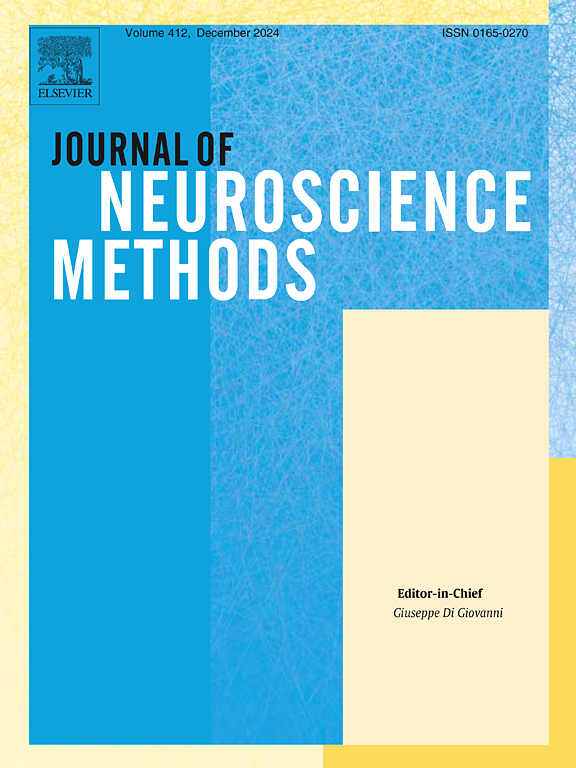Identifying autism spectrum disorder based on machine learning for multi-site fMRI
IF 2.7
4区 医学
Q2 BIOCHEMICAL RESEARCH METHODS
引用次数: 0
Abstract
Background
Autism spectrum disorder (ASD) is a neurodevelopmental disorder characterized by repetitive stereotypical behavior and social impairment. Early diagnosis is essential for developing a treatment plan for autism. Although multi-site data can expand the dataset to facilitate the process of data analysis, data heterogeneity between sites and the large amount of data make data analysis difficult.
Method
To address these issues, this paper proposes a multi-site autism identification method based on machine learning technique. Firstly, the fMRI data from all sites are converted into a glass brain dataset and their features are extracted with LeNet5. Then, the extracted glass brain features are used to construct a partial correlation matrix at subject-level and the multi-site dataset are constructed by feature selection, which is finally classified using MLP. In order to alleviate the heterogeneity of the data and improve the accuracy of data classification, a new dataset partitioning method, Split-Merge-Split (SMS), is proposed in this paper to reduce the variability between the features extracted by the model in the training and test sets.
Results
Extensive quantitative and qualitative evaluations demonstrate the proposed method enhanced the recognition accuracy on both single-site and multi-site dataset, which shows the effectiveness of this method. Specifically, in single-site classification, our method achieved its highest accuracy at the OHSU site, reaching an accuracy of 93 %. In multi-site classification, our method attained an accuracy of 83.5 %.
基于多位点fMRI的机器学习识别自闭症谱系障碍。
背景:自闭症谱系障碍(Autism spectrum disorder, ASD)是一种以重复性刻板行为和社交障碍为特征的神经发育障碍。早期诊断对于制定自闭症的治疗计划至关重要。虽然多站点数据可以扩展数据集,方便数据分析的过程,但站点之间的数据异构性和数据量大给数据分析带来了困难。方法:针对这些问题,本文提出了一种基于机器学习技术的多位点自闭症识别方法。首先,将所有站点的fMRI数据转换成一个玻璃脑数据集,并利用LeNet5提取其特征;然后,利用提取的玻璃脑特征在主题层面构建偏相关矩阵,通过特征选择构建多站点数据集,最后利用MLP进行分类。为了缓解数据的异构性,提高数据分类的准确性,本文提出了一种新的数据集划分方法Split-Merge-Split (SMS),以减少模型提取的特征在训练集和测试集之间的可变性。结果:大量的定量和定性评价表明,该方法在单站点和多站点数据集上都提高了识别精度,表明了该方法的有效性。具体来说,在单位点分类中,我们的方法在OHSU位点的准确率最高,达到93%。在多位点分类中,我们的方法达到了83.5%的准确率。
本文章由计算机程序翻译,如有差异,请以英文原文为准。
求助全文
约1分钟内获得全文
求助全文
来源期刊

Journal of Neuroscience Methods
医学-神经科学
CiteScore
7.10
自引率
3.30%
发文量
226
审稿时长
52 days
期刊介绍:
The Journal of Neuroscience Methods publishes papers that describe new methods that are specifically for neuroscience research conducted in invertebrates, vertebrates or in man. Major methodological improvements or important refinements of established neuroscience methods are also considered for publication. The Journal''s Scope includes all aspects of contemporary neuroscience research, including anatomical, behavioural, biochemical, cellular, computational, molecular, invasive and non-invasive imaging, optogenetic, and physiological research investigations.
 求助内容:
求助内容: 应助结果提醒方式:
应助结果提醒方式:


